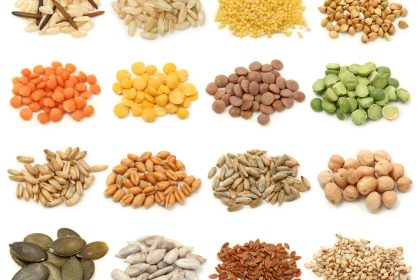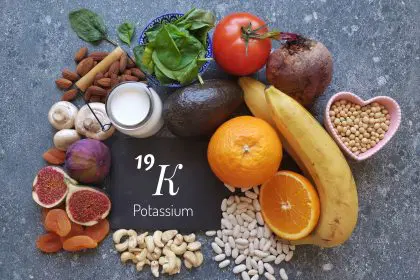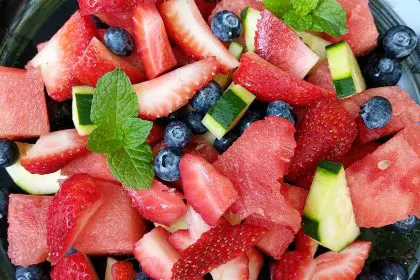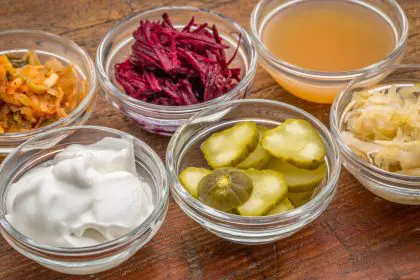The journey toward better heart health doesn’t always require a pharmacy visit. Nature has provided us with incredible foods that can help clear arteries and support cardiovascular wellness in ways that often complement or even surpass traditional approaches. These nutritional powerhouses work through various mechanisms to reduce inflammation, lower cholesterol, and improve blood flow throughout the body.
The science behind artery-clearing foods
Understanding how certain foods impact cardiovascular health requires looking at the complex processes that affect our arteries. When arteries become clogged with plaque buildup, blood flow becomes restricted, leading to increased risk of heart disease and stroke. The foods that help combat this process typically contain compounds that reduce inflammation, prevent oxidation of cholesterol, and support the health of blood vessel walls.
Many of these beneficial foods contain antioxidants, fiber, healthy fats, and specific compounds that have been extensively studied for their cardiovascular benefits. The key lies in incorporating these foods regularly into your diet rather than relying on them as occasional additions.
1. Fatty fish rich in omega-3 fatty acids
Salmon, mackerel, sardines, and other cold-water fish top the list of artery-clearing foods. These fish contain high levels of omega-3 fatty acids, particularly EPA and DHA, which have been shown to reduce inflammation throughout the cardiovascular system. Regular consumption of fatty fish can help lower triglycerides, reduce blood pressure, and decrease the risk of blood clots.
The omega-3 fatty acids in fish work by reducing the production of inflammatory compounds that contribute to plaque formation. They also help improve the flexibility of blood vessels and support healthy cholesterol levels. Eating fatty fish two to three times per week provides optimal benefits for heart health.
Beyond their omega-3 content, these fish also provide high-quality protein and essential nutrients like vitamin D and selenium, which further support cardiovascular wellness. The preparation method matters too – grilling, baking, or steaming preserves the beneficial compounds better than frying.
2. Leafy green vegetables packed with nitrates
Spinach, kale, arugula, Swiss chard, and other leafy greens contain natural nitrates that convert to nitric oxide in the body. This compound helps relax blood vessels, improve blood flow, and reduce blood pressure. The nitrates in leafy greens have been shown to enhance cardiovascular function and may help prevent the formation of blood clots.
These vegetables also provide folate, potassium, and antioxidants like lutein and zeaxanthin, which support overall heart health. The fiber content in leafy greens helps lower cholesterol levels by binding to cholesterol in the digestive system and removing it from the body.
Regular consumption of leafy greens has been associated with slower progression of atherosclerosis, the process by which arteries become hardened and narrowed. Incorporating a variety of leafy greens into daily meals provides maximum benefit, whether through salads, smoothies, or cooked preparations.
3. Berries loaded with antioxidants
Blueberries, strawberries, raspberries, and blackberries contain powerful antioxidants called anthocyanins, which give these fruits their vibrant colors. These compounds help reduce inflammation in blood vessels and may help prevent the oxidation of LDL cholesterol, a key factor in plaque formation.
The antioxidants in berries also support the health of endothelial cells, which line the inside of blood vessels. Healthy endothelial function is crucial for maintaining proper blood flow and preventing the development of cardiovascular disease. Regular berry consumption has been linked to improved blood pressure and reduced risk of heart attack.
Berries also provide fiber, vitamin C, and other nutrients that support overall cardiovascular health. Fresh or frozen berries retain most of their beneficial compounds, making them accessible year-round. Adding berries to breakfast cereals, yogurt, or enjoying them as snacks provides an easy way to incorporate these heart-healthy foods into daily eating patterns.
4. Nuts and seeds for healthy fats
Almonds, walnuts, flaxseeds, and chia seeds provide healthy monounsaturated and polyunsaturated fats that support cardiovascular health. These foods help improve cholesterol profiles by increasing HDL (good) cholesterol while lowering LDL (bad) cholesterol levels. The healthy fats in nuts and seeds also help reduce inflammation throughout the body.
Walnuts deserve special mention for their high content of alpha-linolenic acid, a plant-based omega-3 fatty acid. This compound provides similar benefits to the omega-3s found in fish, making walnuts particularly valuable for heart health. The protein and fiber in nuts and seeds also contribute to their cardiovascular benefits.
Regular consumption of nuts and seeds has been associated with reduced risk of heart disease and improved artery function. A small handful of nuts or a tablespoon of seeds daily provides optimal benefits without excessive calories. Raw or lightly roasted varieties offer the best nutritional value.
5. Avocados rich in monounsaturated fats
Avocados contain high levels of oleic acid, a monounsaturated fat that helps reduce inflammation and has been linked to beneficial changes in genes associated with cancer and heart disease. The healthy fats in avocados help improve cholesterol levels and support the absorption of fat-soluble vitamins from other foods.
The potassium content in avocados helps regulate blood pressure, while the fiber supports healthy cholesterol levels. Avocados also contain compounds that may help prevent the oxidation of cholesterol, reducing the risk of plaque formation in arteries.
Regular avocado consumption has been associated with improved cardiovascular risk factors and better overall diet quality. The versatility of avocados makes them easy to incorporate into various meals, from breakfast toast to salads and main dishes.
Maximizing the benefits of artery-clearing foods
To get the most benefit from these artery-clearing foods, consistency is key. Incorporating these foods into regular meal patterns provides ongoing support for cardiovascular health. Combining multiple heart-healthy foods in single meals can create synergistic effects that enhance their individual benefits.
Preparation methods also matter. Cooking methods that preserve the beneficial compounds in these foods – such as steaming, grilling, or eating them raw when appropriate – help maintain their artery-clearing properties. Avoiding excessive processing and added sugars helps preserve the natural benefits of these foods.
The timing of consumption can also play a role in maximizing benefits. Spreading heart-healthy foods throughout the day provides consistent support for cardiovascular function. Pairing these foods with other healthy lifestyle practices, such as regular physical activity and stress management, amplifies their positive effects on heart health.
Building a heart-healthy eating pattern
Creating lasting changes in cardiovascular health requires adopting sustainable eating patterns that include these artery-clearing foods regularly. This means moving beyond viewing these foods as special additions to making them staples of daily nutrition.
Meal planning can help ensure consistent intake of these beneficial foods. Preparing meals that feature multiple heart-healthy ingredients creates delicious and nutritious options that support long-term cardiovascular wellness. The key is finding enjoyable ways to incorporate these foods that fit individual preferences and lifestyle needs.
Understanding the powerful impact of these natural foods on cardiovascular health empowers individuals to take control of their heart health through dietary choices. While these foods offer remarkable benefits for artery health, they work best as part of an overall healthy lifestyle that includes regular physical activity, stress management, and other heart-healthy practices.















